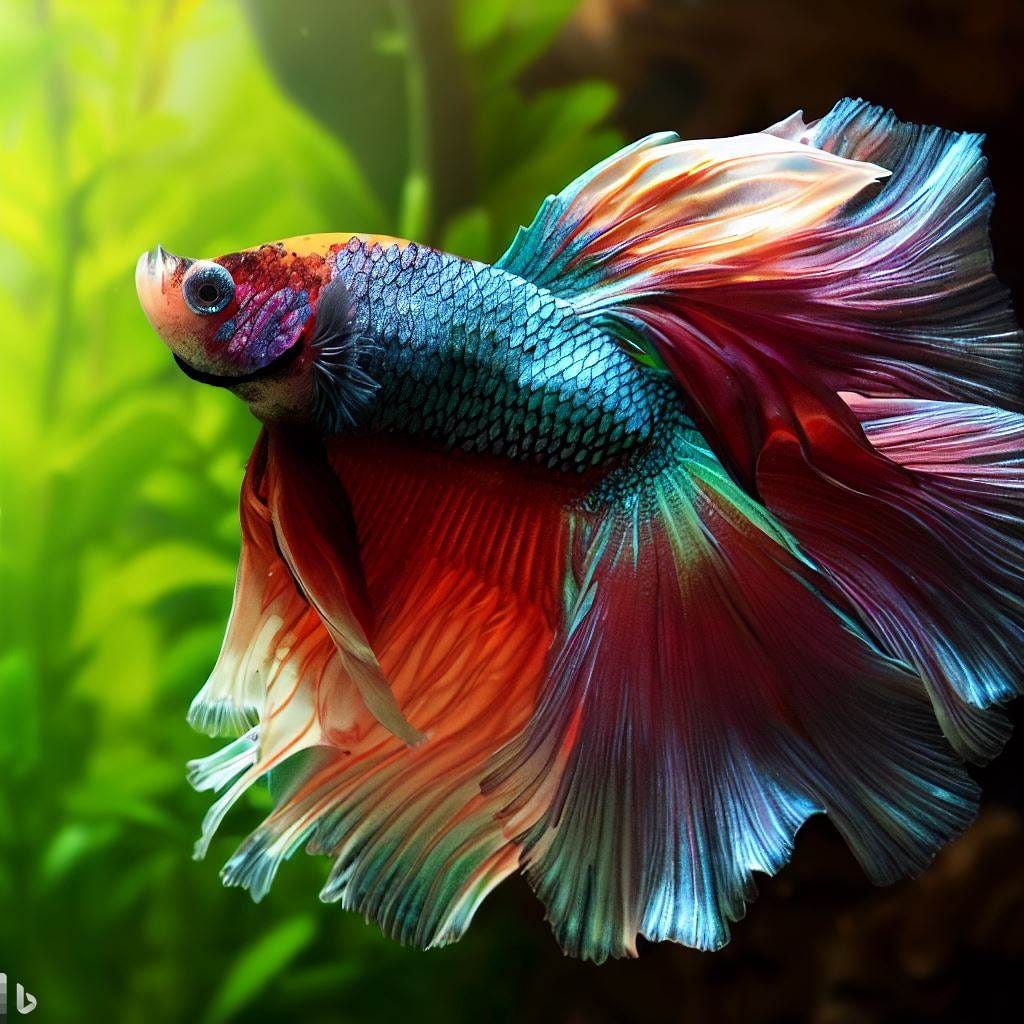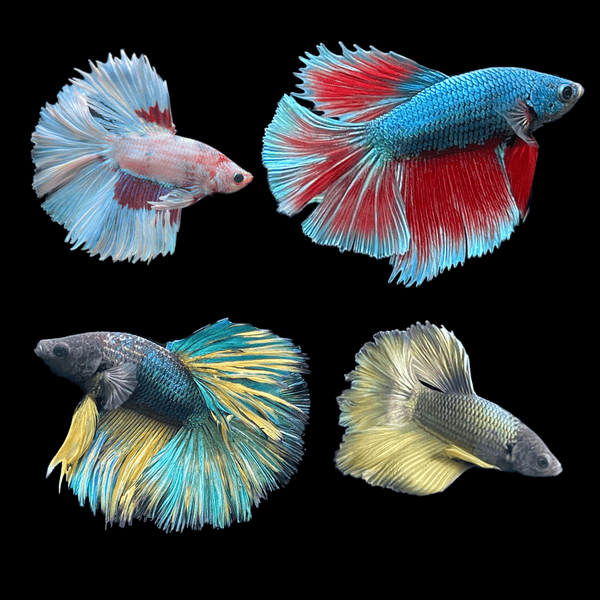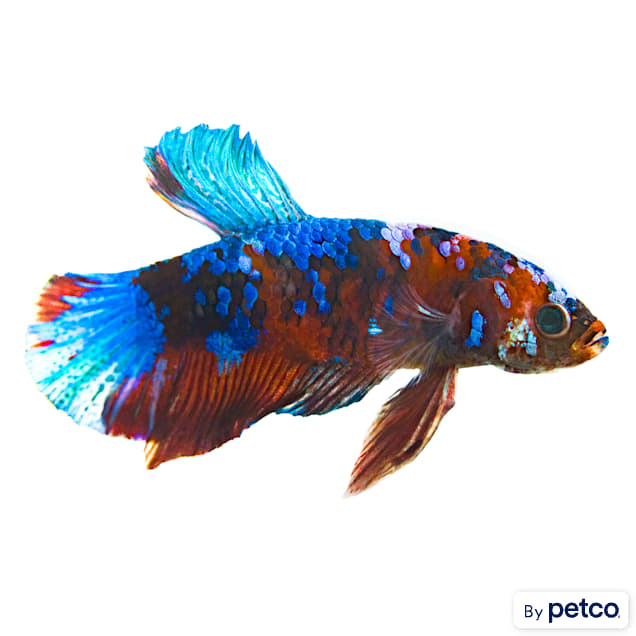How to Present Betta Fish to a Community Container Safely
How to Present Betta Fish to a Community Container Safely
Blog Article
Breeding Betta Fish: a Comprehensive Step-By-Step Guide to Efficiently Raising Baby Bettas From Eggs to Adulthood
Breeding Betta fish is a precise undertaking that requires careful preparation and execution to guarantee the effective development of fry from eggs to develop fish. As the male Betta diligently constructs a bubble nest and guards the priceless eggs, the succeeding phases of treatment and shift demand interest to information and understanding of ideal techniques.

Choosing Breeding Pairs
When beginning on the trip of reproducing Betta fish, selecting the appropriate breeding pairs is vital to accomplishing desirable qualities and a healthy family tree - betta fish. The very first step in this procedure is to determine the particular qualities you wish to boost or preserve, such as shade, fin kind, and physique. It is vital to pick genetically diverse sets to stay clear of inbreeding, which can bring about health issues and unfavorable features
Review prospective breeding candidates very carefully. A healthy male Betta must show lively shades, an active demeanor, and well-formed fins, while the woman needs to also show lively coloration and a rounded tummy, suggesting readiness for spawning. Observing the temperament of both fish is crucial, as aggressive or extremely reluctant people may not breed efficiently.
Documents of family tree is similarly crucial. Keeping documents of the moms and dad fish's origins can help you track hereditary qualities and prospective issues. Furthermore, get in touch with respectable dog breeders or online resources for support on selecting compatible sets. Inevitably, spending time in the option procedure will substantially enhance the likelihood of creating strong, dynamic offspring that fulfill your reproduction objectives (betta fish).

Preparing the Breeding Tank
Producing an ideal reproduction environment is a key step after selecting ideal sets for Betta fish. The reproduction tank should be specifically created to offer comfort and promote the natural breeding habits of the fish. Begin with a storage tank size of at the very least 10 gallons to guarantee sufficient space for both the man and female Bettas.
Keep a mild purification system to keep the water clean while staying clear of strong currents that can stress the fish. Additionally, an air stone can be included to give oxygenation without disrupting the water surface too a lot.
Temperature level guideline is essential; go for a stable array of 78-82 image source ° F(25-28 ° C) utilizing a trusted heating unit. The pH degree must be preserved in between 6.5 and 7.5, and normal water modifications are needed to ensure high water quality.
Integrate floating plants or spawning sponges to create concealing areas for the lady, while also motivating bubble nest building by the male - betta fish. Ensure the storage tank is complimentary from sharp decorations and any possible hazards, as the well-being of the fish must always be prioritized throughout this essential phase of breeding.
The Reproduction Refine
Generally, the breeding process for Betta fish involves a series of distinctive and evident behaviors that indicate preparedness for reproduction. The male Betta starts by building a bubble nest at the water's surface, which acts as a site for the fertilized eggs. This nest is important, as it supplies a secure atmosphere for the eggs till they hatch.
Once the nest is developed, the man will certainly show courtship habits, such as flaring his fins and exhibiting vivid shades to bring in the female. The female, upon noticing the male's readiness, will react by showing upright red stripes along her body, indicating her receptiveness.
The fed eggs then drop to the bubble nest, where the male very carefully accumulates and returns them to the nest. Following this, the male presumes duty for guarding the nest and sites guaranteeing the safety of the eggs up until they hatch out, usually within 24-36 hours.
Caring for Betta Fry
Caring for Betta fry requires mindful interest to their environment and nourishment to make sure healthy growth and advancement. After hatching, Betta fry are very small and at risk, necessitating a stable and clean environment.
Feeding Betta fry is just as important. Feed them tiny amounts a number of times a day, being mindful not to overfeed, which can lead to water quality problems.
Transitioning to Grownup Bettas
As Betta fry fully grown, transitioning them to adult Bettas is a critical stage that needs mindful monitoring of their atmosphere and social interactions. This process normally starts when the fry reach around 6 weeks old, whereupon they can be progressively introduced to an extra structured living environment.
To facilitate this transition, it helpful site is important to ensure that the water criteria-- such as temperature level, pH, and ammonia levels-- are ideal and stable. Adult Betta fish grow in cozy water (around 78-80 ° F) with a pH of 6.5 to 7.5. Gradually accommodate the fry to these conditions to reduce tension.
Social interactions are one more crucial factor; male Bettas are infamously territorial and hostile. It is recommended to separate males right into private containers as they develop. Female Bettas can be housed with each other, yet treatment ought to be taken to keep an eye on for indicators of aggressiveness.
In addition, dietary adjustments should be made as the fry expand. Include high-grade pellets and live foods to sustain their development and wellness. By taking care of these aspects efficiently, you can promote a successful transition to adulthood for your Betta fish.

Verdict
Successful reproduction of Betta fish calls for mindful attention to information throughout the entire procedure, from picking genetically varied pairs to supplying optimum treatment for fry. In addition, a balanced diet and gradual adjustment to grown-up settings are critical for the growth and advancement of Betta fish.
Report this page